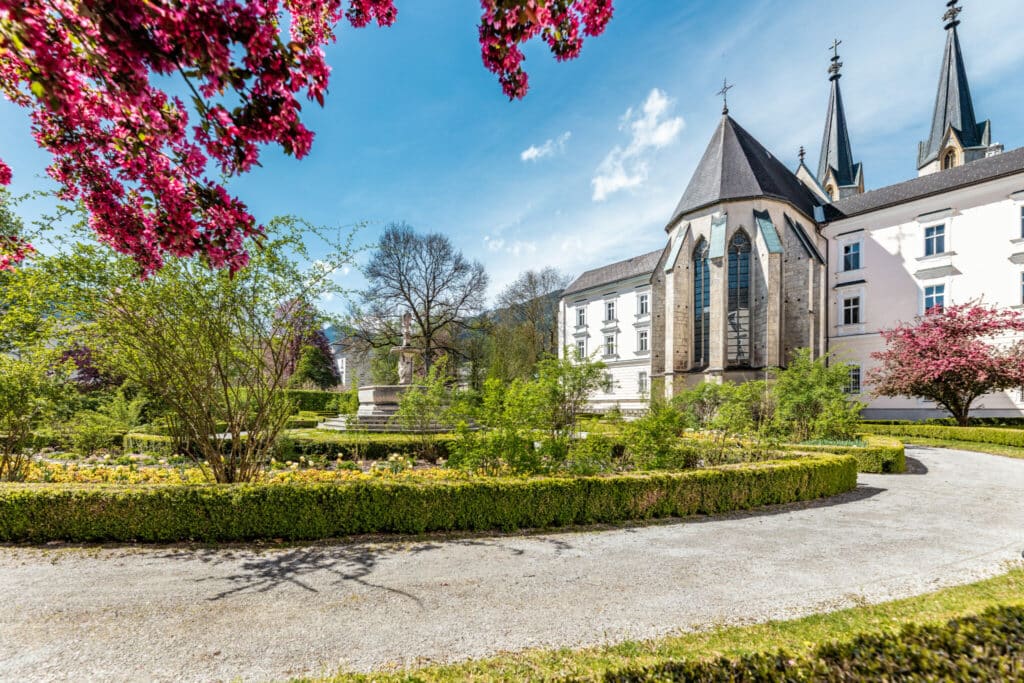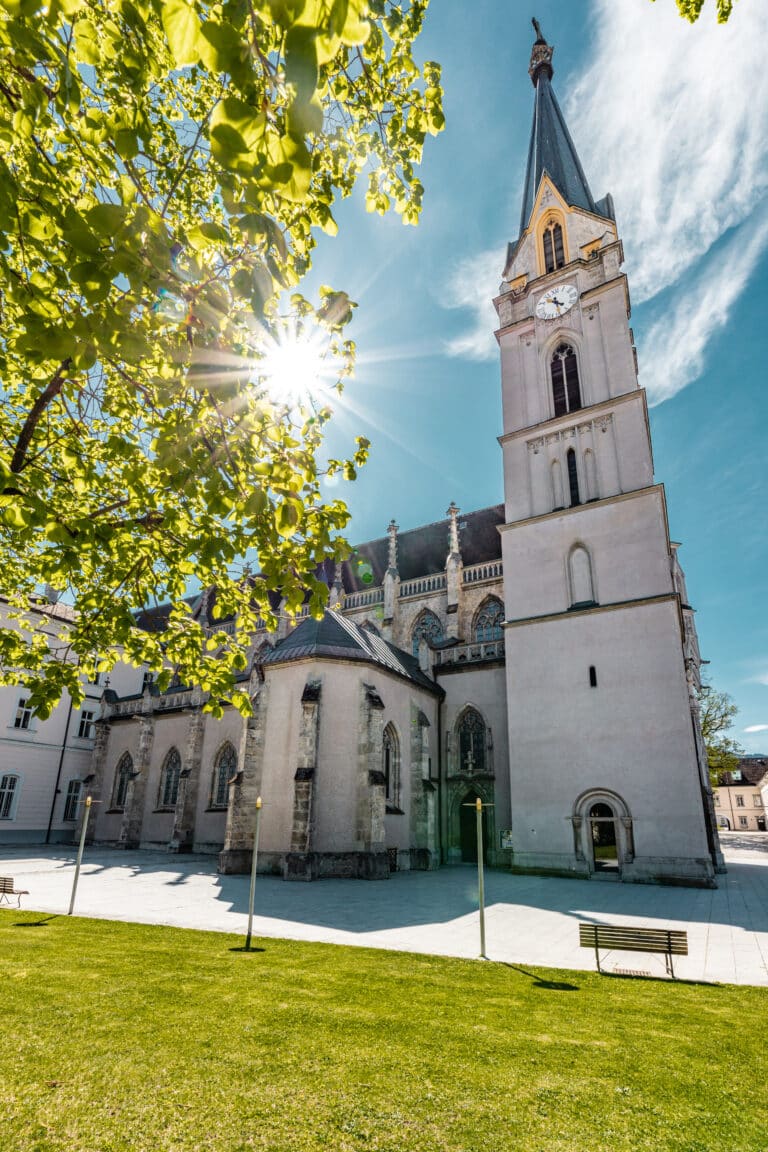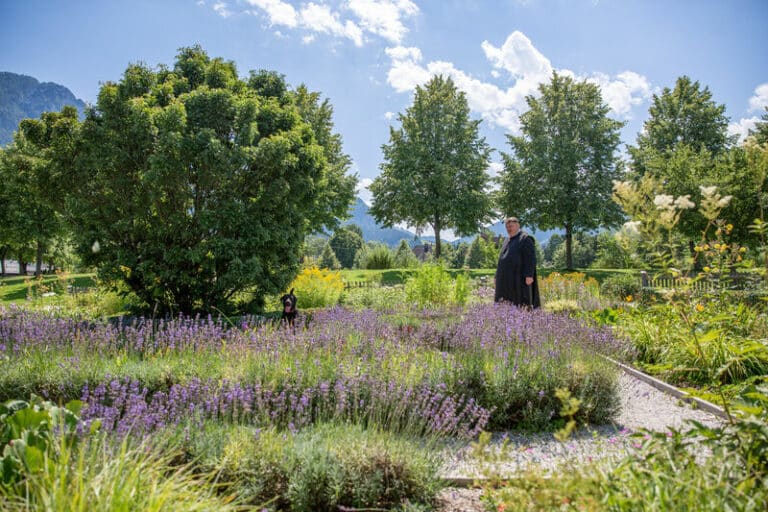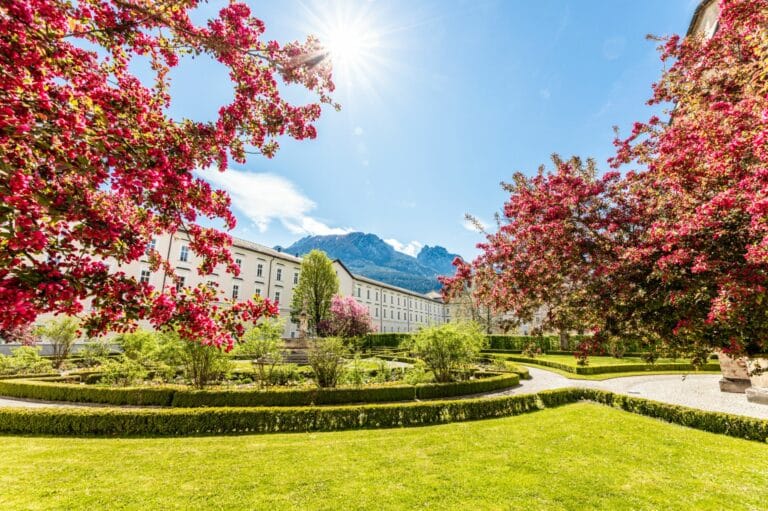The gardens of Admont Abbey - a place of peace and beauty
Nestled against the impressive backdrop of the Benedictine Abbey of Admont, lovingly tended gardens unfold around the abbey building. historic gardensenclosed by a high wall. Once used as fruit, vegetable and ornamental gardens, they still tell of the lively garden culture of past centuries.
A particular highlight are the two baroque Chapelsconsecrated to the saints Benedict and Blasiuswhich were built around 1735 and lend the garden ensemble a spiritual depth.
In the 1960s and 70s, the company awarded Master gardener Karl Nutzinger the eastern and southern areas with extensive Dahlia and fuchsia fields a colourful new face - a legacy that continues to have an impact today.
Experience the tranquil beauty and blooming diversity of the gardens at Admont Abbey - a place to pause, discover and enjoy.


The reconstruction of Admont Abbey - history reshaped
Until the devastating fire in 1865, Admont Abbey was the largest monastery and also the most extensive building in Styria. The fire mainly destroyed the older parts of the building and left behind massive damage. After the fire ruins were cleared, only a large inner courtyard remained - a silent testimony to its former greatness.
But the foundation refused to give in: With great commitment, the Reconstructionand also the Inner courtyard was given a new look over the years. Around 1890, the area, which was once densely planted with trees, was transformed into a inner and outer area separated from each other by a wrought-iron fence. The result is a space that combines history, nature and renewal in a special way.
The reconstruction of Admont - a symbol of hope, stability and the power of renewal.
Old meets new - experience history, feel the present
Past and present merge into a unique experience at the abbey. The harmonious combination of historical elements and contemporary accents comes to life in the interiors as well as in the extensive gardens.
A special highlight is the "Hofgarten" - also known as the Sisters' Garden - opposite the glass houses of the Abbey nursery. This is where tradition and innovation meet: the herb garden modelled on historical examples, the "invisible garden" for the blind and sighted from 2006/07, and the lovingly tended surroundings around the abbey pond invite you to marvel and linger.
Artistic contrasts also characterise the area around the Stiftskellerhof: Baroque masterpieces by Josef Stammel and Markus Schokotnig, including impressive sculptures of ancient goddesses, enter into an exciting dialogue with modern art - most recently with an impressive large sculpture by Austrian artist Bruno Gironcoli.
Discover a place where history does not stand still - but lives on in every detail.












